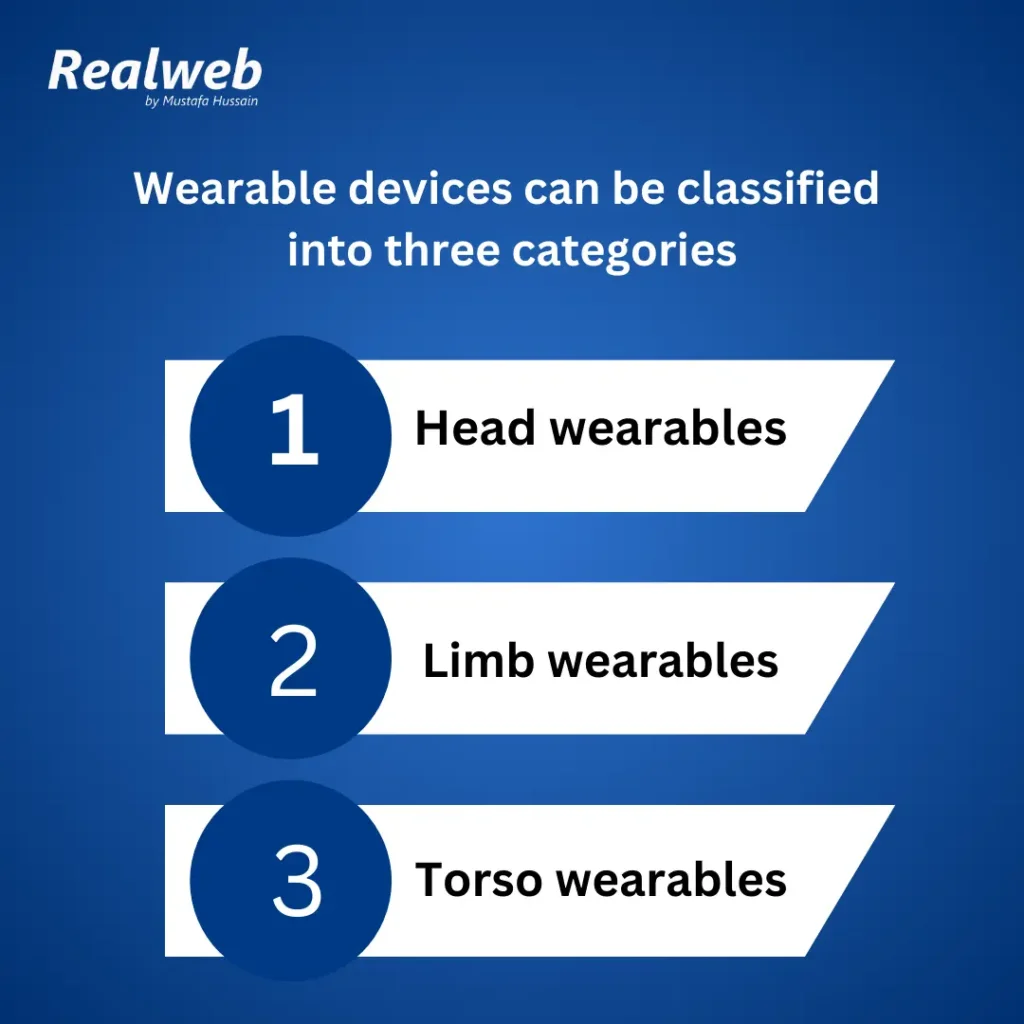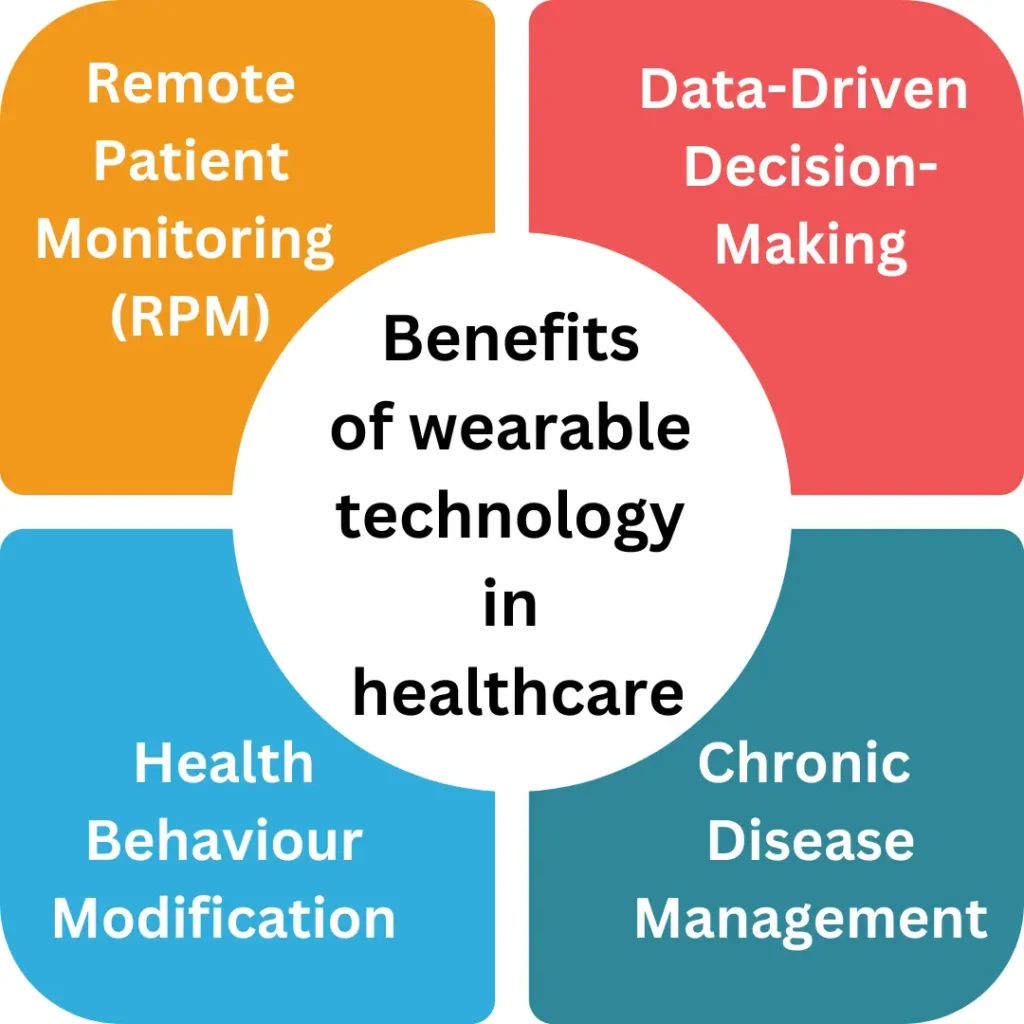Wearable technology is more than just a passing trend; it is a lasting advancement. After all, tracking fitness progress on your wrist is far more convenient than frequent visits to the emergency room.
Our time is characterized by a rapid growth in technology. Every aspect of contemporary life, including healthcare, is influenced by these technological innovations. The healthcare sector is experiencing a significant transformation. Deloitte Global anticipates that the number of wearable devices will increase to approximately 440 million by 2024, up from 320 million in 2022.And it increased.

Table of Contents
ToggleWhat is wearable technology?
Wearable technology refers to electronics equipped with sensors, networking capabilities, and advanced features that can be worn on the body as accessories or integrated into clothing. These devices enhance, track, or monitor various aspects of the wearer’s life, particularly their health.
Wearable technologies combine wearable electronics with artificial intelligence and medical data. Both doctors and patients can access real-time health status through these gadgets.
An example of wearable technology is fitness trackers. These devices, connected to smartphone apps, provide information about fitness and overall health, such as physical activity, heart rate, sleep patterns, and other health metrics.
Health tech wearables offer personalized, real-time health analysis, helping people identify problems early and achieve better outcomes. They also reduce the need for in-person, often costly, visits to hospitals and doctor’s offices by enabling remote monitoring by apps and physicians.
When paired with IoT app development, wearable technology like smart glasses uses sensors and cameras to perceive their surroundings. They project digital data into the user’s field of vision, merging virtual and physical elements. This new technology has revolutionized data visualization, remote work, and digital content engagement.

Wearable devices can be classified into three categories: head wearables, limb wearables, and torso wearables.
Head wearables include items like glasses, helmets, and headbands, commonly used in telemedicine and medical education, often integrating virtual and augmented reality.
Limb wearables, such as smartwatches and bracelets, primarily monitor physiological parameters, while lower limb wearables, like smart shoes, are used for rehabilitation.
Torso wearables, embedded in fabrics, have diverse applications in the biomedical field.

Benefits of wearable technology in healthcare
Remote Patient Monitoring (RPM)
- Constant monitoring of heart rate, blood pressure, blood glucose levels, and activity levels.
- RPM via wearables allows for early detection of irregularities and timely interventions.
- Patient engagement and responsibility are heightened through wearable devices.
- RPM using wearables enhances healthcare efficiency by minimizing in-person visits, optimizing resource allocation, and improving provider communication.
Data-Driven Decision-Making
Wearable devices gather immediate health data such as temperature, heartbeat, vital signs, activity, and sleep, enabling healthcare professionals to analyze health and fitness data and gain insights into patients’ well-being, thereby enhancing diagnosis, fostering collaborative patient-provider relationships, and facilitating more effective healthcare delivery.
- Healthcare wearables offer real-time monitoring of vital health metrics.
- Analyzing wearable data enables tailored interventions and care plans, thereby improving healthcare outcomes.
- Wearable devices detect early signs of health issues for proactive intervention.
- Wearables empower patients in healthcare decision-making, fostering increased engagement and adherence to treatment plans.
Health Behaviour Modification
- Wearables utilize behavioral science and gamification to promote healthier behaviors.
- Various features incentivize individuals to maintain physical activity levels, adopt healthy eating habits, and adhere to treatment plans, ultimately leading to improved health outcomes.
Chronic Disease Management
Wearables help manage chronic diseases like diabetes, hypertension, and cardiovascular conditions. This technology enables remote health monitoring, enhancing at-home care and reducing hospital admissions. Medication reminders sent to patients’ apps improve adherence.
According to the World Health Organization, chronic illnesses account for 71% of global deaths each year. Diseases like diabetes, respiratory ailments, and cardiovascular conditions pose significant challenges to healthcare systems worldwide. Wearable technologies show great promise for managing these chronic diseases.
Innovations in Wearable Technology
- Advanced sensors in wearables measure physiological parameters accurately, ensuring precise health monitoring and better device reliability.
- AI and machine learning allow wearables to analyze health data, providing personalized insights and recommendations.
- Miniaturization in wearable tech leads to compact, discreet designs, improving user experience.
- Wireless connectivity in wearables enables communication with devices and platforms for data sharing and integration.
- Ensures interoperability between devices and healthcare systems.
Final Thoughts
Wearable technology can revolutionize healthcare, especially with advances in spatial computing. The Apple Vision Pro shows how wearable apps can transform medical discussions and improve patient outcomes.
Unlocking the full potential of wearable tech in healthcare relies on collaboration between IT developers, healthcare professionals, and regulatory agencies. Realweb can be your IT development partner in creating perfect wearable solutions. Contact us.
FAQ’s
1. What is wearable technology?
Answer – Wearable technology includes devices like fitness trackers and smartwatches that are worn on the body to monitor and track various health metrics such as heart rate, activity levels, and sleep patterns. These devices use sensors and networking capabilities to provide real-time health data.
2. How do wearables enhance healthcare?
Answer – Wearables enable remote patient monitoring, data-driven decision-making, and personalized health insights. They help detect early signs of health issues, promote healthier behaviors, and manage chronic diseases effectively, reducing the need for frequent hospital visits.
3. What are the different types of wearable devices?
Answer – Wearables can be classified into three categories: head wearables (glasses, helmets), limb wearables (smartwatches, bracelets), and torso wearables (smart fabrics). Each type serves different health monitoring and enhancement purposes.
4. What are the benefits of wearable technology in healthcare?
Answer – Wearables provide continuous health monitoring, early detection of health issues, and data-driven insights for better decision-making. They improve patient engagement, adherence to treatment plans, and overall health outcomes while reducing healthcare costs.
5. How is wearable technology evolving?
Answer – Wearable technology is advancing with more accurate sensors, AI and machine learning for personalized insights, miniaturized designs for comfort, and wireless connectivity for seamless data sharing. These innovations enhance device reliability and user experience.







